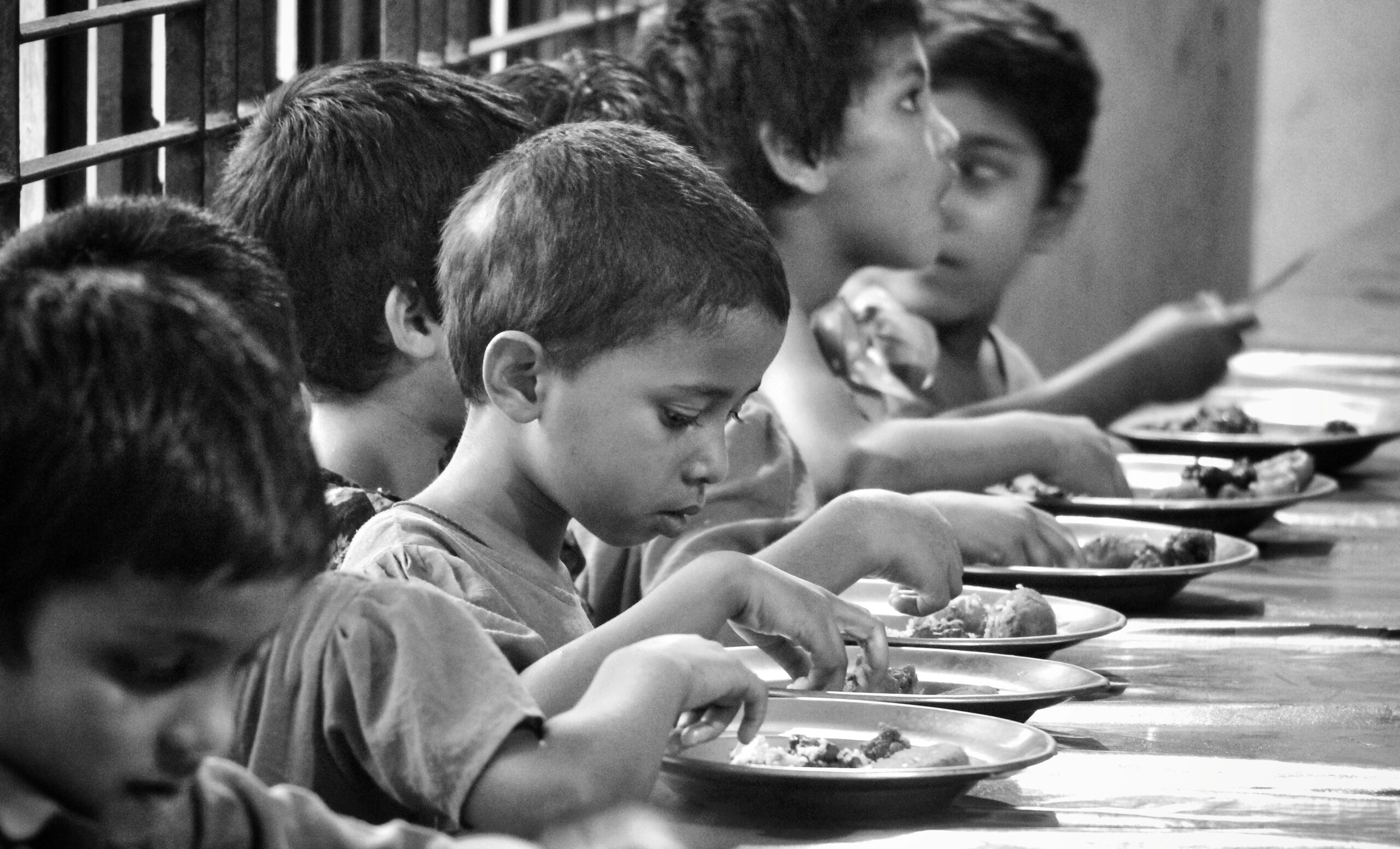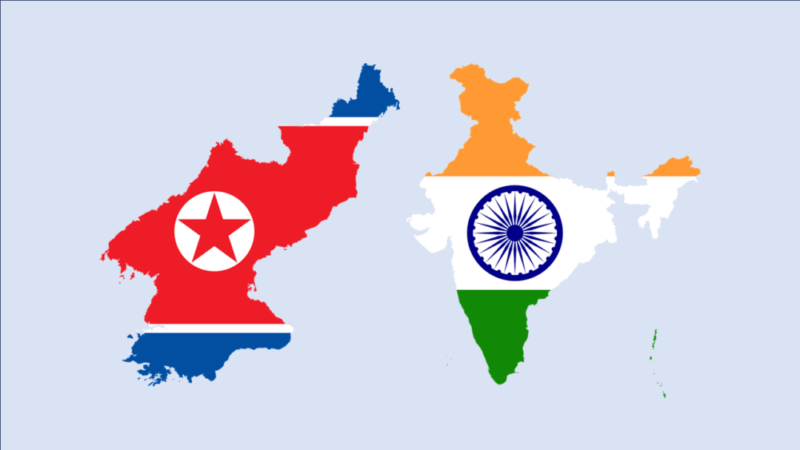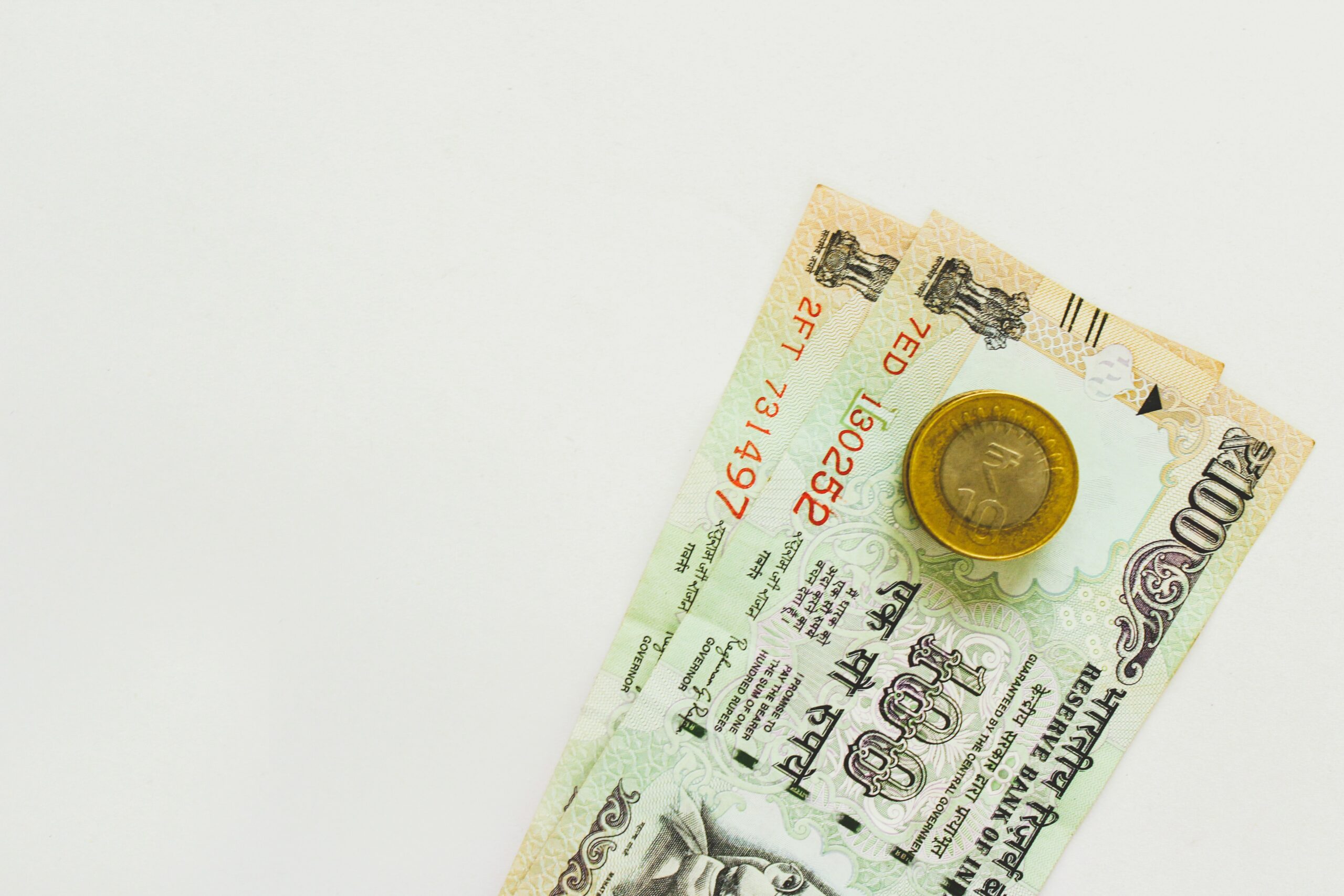Shria is currently enrolled in Grade 12 at Inventure Academy. She is passionate about understanding people across cultures and has developed the ability to do so while growing up in the UK, the Middle East and in India. Combining this interest with a strong enthusiasm towards the field of Economics, she wishes to specialize in behavioral economics at the undergraduate level.
Abstract
The Mid-Day Meal Scheme has been implemented in India since 1995. Its primary goal is to provide free, nutritious meals to underprivileged children, thereby promoting equality among children by eradicating hunger – an obstacle in the pursuit of school education. This research article argues that the mid-day meal scheme is a quintessential example of leveraging nudge theory in public policy. The article will explore the scheme’s objectives, its alignment with nudge theory, and the positive impact it has had on enrollment numbers and increased attendance among Indian students in public schools. The article will also delve into the limitations of the scheme, the current challenges faced by policymakers and offer policy recommendations for improvement.
Introduction
Nudge theory is based on the principle that people can be “nudged” to make certain decisions. An important aspect of “nudging” includes a “choice architecture – the responsibility for organizing and presenting the options that influence people’s decisions (Agnihotri, 2010). A choice architecture can aim for a desired outcome by arranging the choices in a specific manner, but still maintaining the freedom to choose. The Midday Meal Scheme in India stands as a compelling testament to the potential of nudge theory and the concept of choice architecture in shaping public policy and societal outcomes. In this case, public policy has leveraged nudge theory to encourage better decisions and positive societal changes without applying strict mandates or restrictions.
This government scheme has nourished millions of underprivileged children and significantly influenced enrollment and attendance (Bhagwat, Sankar, Sachdeva & Joseph, 2014). Through subtle nudges, it has made the compelling case for attending school consistently with the prospect of consuming nutritious meals, transforming the pursuit of education into a convenient and desirable choice for parents and students alike. This research paper examines how nudge theory is applied in India’s education policy, and how it has positively affected student enrolment and attendance numbers.
The Objectives of the Mid-Day Meal Scheme
The Mid-Day Meal scheme, initiated on the 15th of August 1995 is one of India’s earliest and most significant nudging policies in the sphere of education. First implemented in Tamil Nadu before expanding to Gujrat, Kerala, Madhya Pradesh and Orissa in 1995, the scheme became a Supreme Court order in November 2001. The court adjudicated that implementation of the scheme fulfills the ‘right to food’, thereby instructing all states to implement the Mid-Day Meal Scheme in public schools (Sripathi, Mohapatra, Dehury, Surya, Behera & Dehury, 2023).
Since 2001, guidelines were also issued by the government to ensure a minimum nutritional quality to the meals provided. For instance, it was directed that the minimum calorie intake should be 300 with 8-12 grams of protein each day for a minimum of 200 days. This scheme also allowed collaboration with non-governmental organizations to provide the meals. Indeed, in Rajasthan there are instances of public-private partnerships for supplying the mid-day meals to public schools (Sahai, 2014).
By employing the principles of choice architecture, the scheme gently nudges parents and students towards positive behaviors, making school attendance an attractive option due to the availability of nutritious food. Empirical evidence demonstrates the scheme’s success. Enrollments have increased, with significant improvements in attendance and retention, particularly among girls. Gross enrollment ratios at the national level have surged, highlighting the effectiveness of this policy (Khera, 2006).
The scheme aimed to increase student enrollment, retention and learning abilities of the students by providing free, nourishing meals to poor and downtrodden children. This scheme also aimed to create a sense of equality between genders and children from different income groups as everyone is getting the same meals. The larger objective of this scheme was to eliminate the problem of classroom hunger, which was documented as a major obstacle in an effective learning system directed towards children from lower-income households (Bhagwat, Sankar, Sachdeva & Joseph, 2014).
Hence, according to Kaur (2021), the Mid-day Meal Scheme successfully embodies elements of nudge theory by leveraging the concept of “choice architecture” in ensuring that children and their households make the healthy choice (attending school and consuming nutritious food). The scheme makes school attendance the easy and attractive option for parents as they save money on food by sending their children to school (Bonds, 2012). The scheme aligns with nudge theory’s principles of designing policies that guide individuals towards beneficial decisions, ultimately fostering better nutrition and education outcomes.
With the introduction of the midday meal scheme, there were multiple benefits in enrolment, attendance, and retention of enrolled students. Studies indicate that after the MDM scheme was implemented, the enrolment of boys from both rural and urban backgrounds in Ghorakpur and Sharangpur increased from 336 to 367. The enrolment of girls from both rural and urban backgrounds increased from 239 to 331. Attendance increased of children from both rural and urban backgrounds from 82.9% to 86.5% (Paltasingh & Bhue, 2022). The retention of boys from both urban and rural backgrounds across India decreased from 98.17% to 98% and for girls from rural and urban backgrounds, it increased from 96.28% to 97.33%. Furthermore, the all-India gross enrolment ratio after the scheme was implemented rose from 78.51 in 1971 to 112.96 (Laxmaiah, Rao, Reddy, Ravindranath, Rao & Vijayaraghavan, 1999). The mid-day meal scheme also played a crucial role in decreasing the dropouts especially among girls which was significant in bringing some form of equality among all sections of society within the students.
Although these policies have pushed for beneficial improvements, they also confronted a number of obstacles, such as problems with the infrastructure, a lack of financing, and teacher shortages. Firstly, there is inadequate infrastructure in public schools in India. This implies, for instance that food grains are stored in classes, posing a risk of rats habituating the premises unhygienically to eat the grains. Research also indicates that there is a serious delay in the release of funds, of anywhere between 3 to 4 months (Palanisamy, Kalaivani, Rajasekaran & Sunil, 2011). Public schools hence often must pool their own limited resources to purchase items like vegetables and oils which creates an opportunity cost for them in terms of improving the infrastructure of the school instead.
The National Institute of Public Finance and Policy analyzed in 2018 the fiscal implications of the Midday meal scheme. The program demands substantial funds to purchase food, ensure its quality, and keep the infrastructure in working order. This expense may put a burden on state finances by taking money away from other crucial areas like healthcare. Furthermore, it may be difficult for states to maintain the program continuously due to changes in food costs and the requirement for stable budgetary contributions and this fiscal pressure may have an impact on the states’ overall economic goals for development and stability (Sahai, 2014).
Recommendations
Based on the above-mentioned problems of the midday meal, there can be some suggestions on ways to improve the policy. One would be to strictly enforce hygiene and safety standards since the data indicates multiple hygiene and storage issues (Ramachandran, 2019). Hence proper infrastructure and facilities to maintain the sanitary standards should be provided. Moreover, there should be regular inspections conducted to ensure hygiene and prevent any rodent infestations. Implement a robust quality control mechanism to monitor the sourcing, storage, and preparation of food items, ensuring they meet hygiene and nutritional standards.
Also, to ensure sure that funding is provided timely there should be an implementation of a more efficient bureaucratic system which makes sure that funds are provided on time (Verma, 2015). Local governments can also explore partnerships with private sector businesses for the procurement and distribution of food, which can reduce government costs, increase efficiency and fulfill the firm’s corporate social responsibility (CSR) objectives. The government could also conduct an analysis to identify areas where cost savings can be made without compromising on food quality, such as bulk purchases or developing a more efficient food distribution system.
Encourage community participation in the planning and implementation of the MDM scheme to foster a sense of ownership and accountability (Agnihotri, 2010). Promote involvement of local women’s groups, NGOs, and community leaders in monitoring and providing feedback on the program.
Conclusion
Despite its successes, challenges persist including infrastructure inadequacies, delayed funding, and fiscal pressures pose substantial hurdles. However, it is important to recognize these challenges as opportunities for improvement. Strict enforcement of hygiene standards, regular inspections, and efficient bureaucratic processes are some of the policy recommendations that are vital for the sustained success of the scheme. Additionally, partnerships with the private sector could optimize resource utilization, enhance efficiency, and fulfill corporate social responsibility (Sripathi, Mohapatra, Dehury, Surya, Behera & Dehury, 2023).
Moreover, a critical analysis of cost-saving avenues, like bulk purchases and improved distribution systems can alleviate financial strains for both administrative entities and public schools. Addressing these issues will not only bolster the Midday Meal Scheme’s impact but also reinforce the core tenets of nudge theory in public policy (Palanisamy, Kalaivani, Rajasekaran & Sunil, 2011). By continuously refining these nudges and overcoming challenges, India can ensure that every child receives equitable and excellent educational opportunities, thus fulfilling the true promise of nudge theory in transforming society. While nudge-based policies have advanced the cause of education in India, there are still issues that must be resolved to maximize their impact. Prioritizing the creation of reliable infrastructure, streamlining financing procedures, filling teacher shortages, and improving data accuracy are all tasks for policymakers (Deodhar, Mahandiratta, Ramani, Mavalankar, Ghosh & Braganza, 2012). By doing this, India may better realize the promise of the nudge theory to provide all of its children with fair and excellent educational opportunities.
References
- Agnihotri, Simmi. “An Assessment of the Mid-Day Meal Scheme in India—A Study.” Indian Journal of Public Administration 56, no. 3 (2010): 635
- Bhagwat, Sadhana, Rajan Sankar, Ruchika Sachdeva, and Leena Joseph. “Improving the nutrition quality of the school feeding program (Mid-Day Meal) in India through fortification: a case study.” Asia Pacific Journal of Clinical Nutrition 23 (2014).
- Bonds, Stephanie. “Food for thought: Evaluating the impact of India’s mid-day meal program on educational attainment.” University of California, Berkeley (2012).641.
- Deodhar, Satish Y., Sweta Mahandiratta, K. V. Ramani, Dileep V. Mavalankar, Sandip Ghosh, and Vincent SJ Braganza. “Mid day meal scheme: Understanding critical issues with reference to Ahmedabad city.” (2007).
- Kaur, Randeep. “Estimating the impact of school feeding programs: Evidence from mid day meal scheme of India.” Economics of Education Review 84 (2021): 102171.
- Khera, Reetika. “Mid-day meals in primary schools: Achievements and challenges.” Economic and political Weekly (2006): 4742-4750.
- Laxmaiah, A., K. V. Rameshwar Sarma, D. Hanumantha Rao, G. Reddy, M. Ravindranath, M. Vishnuvardhan Rao, and K. Vijayaraghavan. “Impact of mid-day meal program on educational and nutritional status of school children in Karnataka.” Indian Pediatrics 36, no. 12 (1999): 1221-1228.
- Navaneethan, Palanisamy, Thiagarajan Kalaivani, Chandrasekaran Rajasekaran, and Nautiyal Sunil. “Nutritional status of children in rural India: a case study from Tamil Nadu, first in the world to initiate the Mid-Day Meal scheme.” Health 3, no. 10 (2011): 647.
- Paltasingh, Tattwamasi, and Prakash Bhue. “Efficacy of mid-day meal scheme in India: challenges and policy concerns.” Indian Journal of Public Administration 68, no. 4 (2022): 610-623.
- Ramachandran, Prema. “School mid-day meal programme in India: past, present, and future.” The Indian Journal of Pediatrics 86, no. 6 (2019): 542-547.
- Sahai, Chandra Shekhar. “Mid-day meal scheme: Achievements and challenges.” International Journal of Humanities and Social Science Invention 3, no. 10 (2014): 6-9.
- Sharma, Riya. “Mid-day meal scheme in India: the road ahead.” Dev Country Stud 5, no. 11 (2015).
- Sripathi, Nishchala, Jagatabandhu Mohapatra, Parthsarathi Dehury, Surya Neeragatti, Sangita Behera, and Ranjit Kumar Dehury. “The Function of Mid-day Meal Scheme: A Critical Analysis of Existing Policies and Procedures in Rayagada District of Odisha (India).” The International Journal of Community and Social Development 5, no. 1 (2023): 97-118.
- Verma, L. “Impact of Mid day Meal Programme in India: A review.” Int. J. Multidiscip. Approach Stud (2015).







